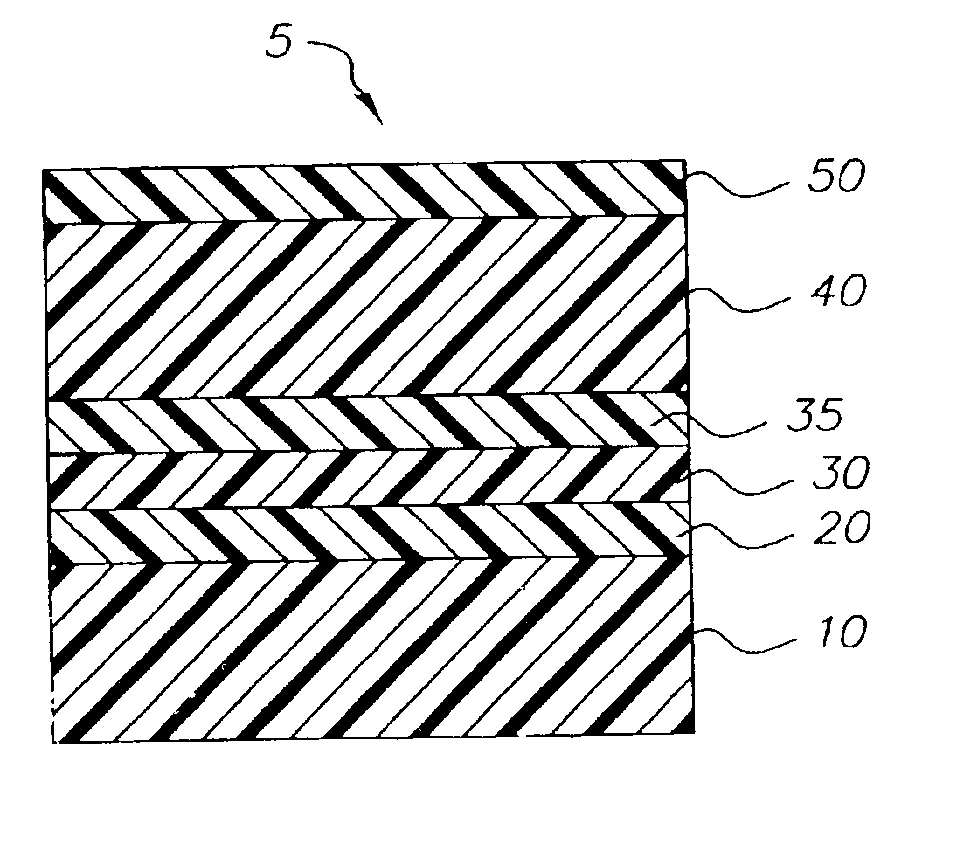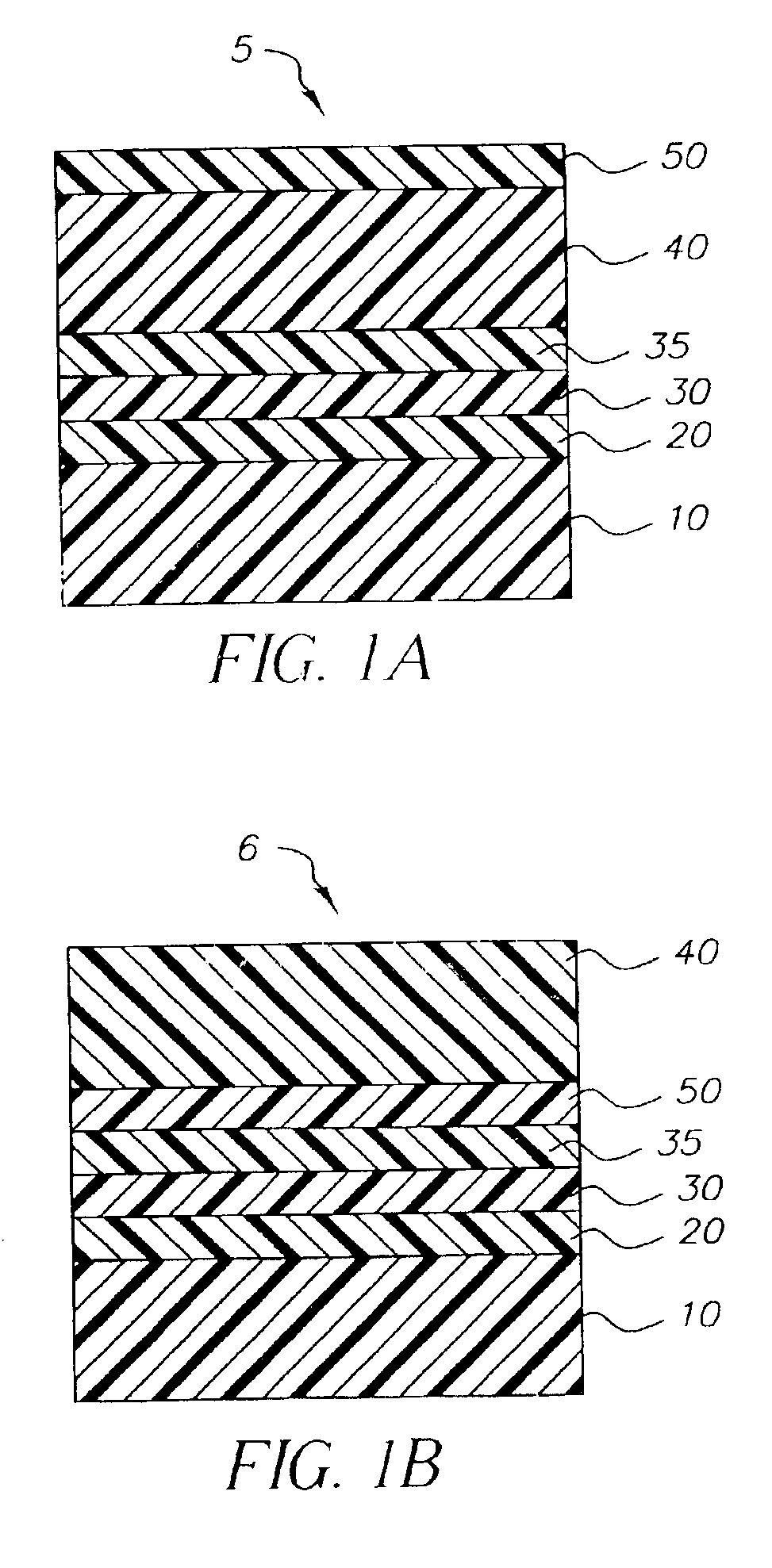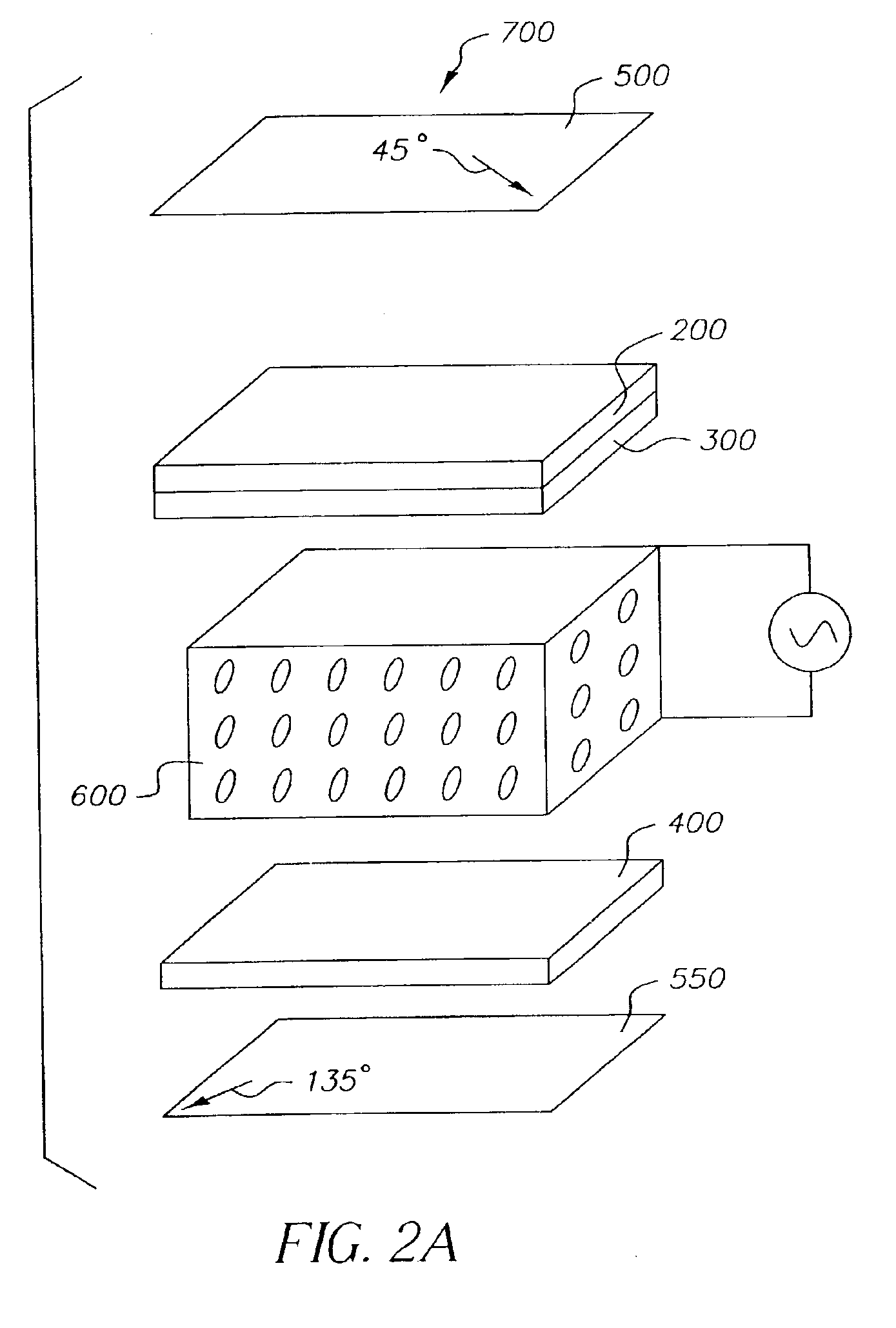Liquid crystal cell with compensator layer and process
a liquid crystal cell and compensator layer technology, applied in the field of liquid crystal cells, can solve the problems of limiting the potential thickness to be considered for this layer, unable to independently control the production of two orthogonal retardations by this method, and difficult to produce uniform optical compensators by this method, etc., to achieve the effect of convenient manufacturing
- Summary
- Abstract
- Description
- Claims
- Application Information
AI Technical Summary
Benefits of technology
Problems solved by technology
Method used
Image
Examples
example 1
Polymer I (Synthesis)
To a stirred mixture of 4,4″-hexafluoroisopropylidenediphenol (33.62 g, 0.1 mole) and triethylamine (22.3 g, 0.22 mole) in methylene chloride (200 mL) at 10° C. was added a solution of terephthaloyl chloride (10.15 g, 0.05 mole) and isophthaloyl chloride (10.15 g, 0.05 mole) in methylene chloride (100 mL). After the addition, the temperature was allowed to rise to room temperature and the solution was stirred under nitrogen for 4 hours, during which time triethylamine hydrochloride precipitated in a gelatinous form and the solution became viscous. The solution was then filtered and washed with dilute hydrochloric acid, (100 mL of 2% acid) followed three times by water (200 mL). The solution was then poured into methanol with vigorous stirring, and a white fibrous polymer precipitated. The glass transition temperature of this polymer was measured by differential scanning calorimetry to be 199° C.
Poly(4,4′-hexafluoroisopropylidene-bisphenol) terephthalate-co-isop...
example 2
Polymer II was similarly prepared using terephthaloyl chloride and 4,4′-(hexahydro-4,7-methanoindan-5-ylidene) bisphenol. The glass transition temperature of this polymer was measured by differential scanning calorimetry to be 289° C.
Poly(4,4′-hexahydro-4,7-methanoindan-5-ylidene bisphenol) terephthalate
Polymer II
When polymer II is spun cast onto a glass substrate (10% solids in dichloroethane), it shows the following optical retardations. Re, Rth and the polymer II layer thickness are measured with an ellipsometer (model M2000V, J.A. Woollam Co.) at 550 nm wavelength.
TABLE IIPolymer II LayerRe, In-PlaneRth, Out-of-Planethickness (μm)Retardation (nm)Retardation (nm)3.40.2−74
example 3
Polymer III was similarly prepared using terephtaloyl chloride, isophthaloyl chloride and 4,4′-isopropylidene-2,2′,6,6′-tetrachlorobisphenol. The glass transition temperature of this polymer was measured by differential scanning calorimetry to be 250° C.
Poly(4,4′-isopropylidene-2,2′6,6′-tetrachlorobisphenol) terephthalate-co-isophthalate
Polymer III
When polymer III is spun cast onto glass (10% solids in dichloroethane), it shows the following optical retardations. Re, Rth and the polymer III layer thickness are measured with an ellipsometer (model M2000V, J.A. Woollam Co.) at 550 nm wavelength.
TABLE IIIPolymer III LayerRe, In PlaneRth, Out of Planethickness (μm)Retardation (nm)Retardation (nm)2.80.8−66
PUM
| Property | Measurement | Unit |
|---|---|---|
| thickness | aaaaa | aaaaa |
| thickness | aaaaa | aaaaa |
| thickness | aaaaa | aaaaa |
Abstract
Description
Claims
Application Information
 Login to View More
Login to View More - R&D
- Intellectual Property
- Life Sciences
- Materials
- Tech Scout
- Unparalleled Data Quality
- Higher Quality Content
- 60% Fewer Hallucinations
Browse by: Latest US Patents, China's latest patents, Technical Efficacy Thesaurus, Application Domain, Technology Topic, Popular Technical Reports.
© 2025 PatSnap. All rights reserved.Legal|Privacy policy|Modern Slavery Act Transparency Statement|Sitemap|About US| Contact US: help@patsnap.com



